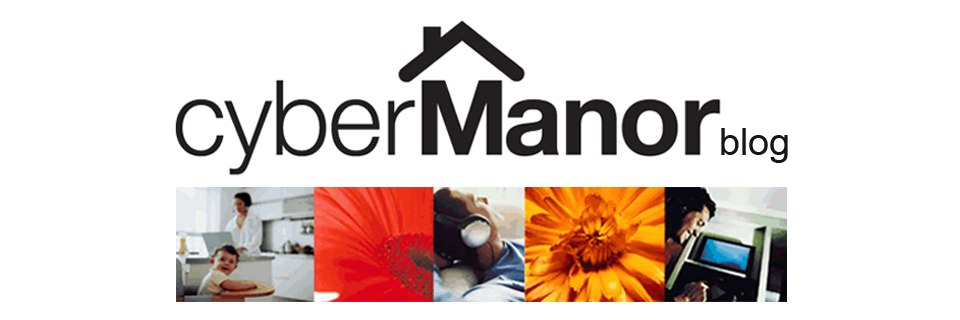We are all
acutely aware of the fact that new home construction is far from its peak of a
few years ago and this market will be very slow to come back to health. For custom electronic integrators that
relied primarily on new home construction for business it will be a long and
difficult road back to the profitable years of the last decade.
But over the
last year our company has seen a significant swell of new and recurring
business in what is commonly referred to as technology refresh installations. It has been driven by the obsolescence of
analogue technologies and the increased mass adoption of digital technologies
in the home. At its core, the analog
home has become the digital home. All of our customers now listen and view content
from cloud based services. All of our
customers store their audio and entertainment on hard drives throughout the
home and want to view it anywhere there is a TV or iPad/iPhone in the
home. All of our customers want to control
their content from network connected devices (wired or wireless) distributed
throughout the home. All of our
customers want access to their digital content when they travel.
The analogue
based infrastructure installed in their high end homes in the late 1990s and
early 2000’s will not meet their current needs. And they are looking for companies like
cyberManor to “digitally remodel” their homes. Driven by consumer demand for products like
the Apple TV/iPad, NetFlix, Sonos, TiVO, Sling Box, HDMI based TVs and BluRay
players (to name just a few of the newer digital products for the home) – we
find our company has become a trusted professional for these digitally enhanced
and integrated homes.
These installations
are typically not large 6 figure “new construction” type of deals – they don’t
involve a lot of pre-wire and in-wall products because these are existing
homes. What they do involve is an
intelligent leveraging of the home’s existing wiring infrastructure to implement
today’s whole house digital solutions.
Ideally we look for a CAT5 structured wiring plant throughout the home
on which to build our digital framework.
We will often find that CAT5 wiring was installed in the home but never fully
terminated so our first course of action is to terminate and label all this CAT5
wire and install a business class 10/100/1000 switch. This becomes the digital wired foundation
from which we can enable all of our entertainment and control solutions. Where CAT5 wire is not available we can
look at leveraging power-line and wireless solutions to enhance and extend the
networked coverage of the home.
Whole house
audio is the first system that we upgrade to a digital solution. Most of our clients are now listening to streamed
music from the internet in addition to their own digital music collection. Many of these homes already have a
structured speaker wiring whole house audio system – but they typically are
driven by a “dumb” central amplifier that will only allow the homeowner to play
one source at a time throughout the home.
And the only audio control in a given room is volume attenuation with a
volume control knob on the wall. We
can leverage the whole house in wall speaker system and infrastructure speaker wire
by installing multiple “network intelligent” Sonos amplifiers at the speaker
wire head end – replacing the single whole house amplifier that currently
exists in the home. This Sonos
solution allows our clients to listen to any music (online or their own local
music collection) in any of the rooms where speakers are currently
installed. And with an Android, iPOD,
iPAD, PC or Mac desktop interface they can control not only the music volume in
a given room but the source content and the various transport control options
(skip, pause, rewind, etc.)
The next
upgrade we look at is the home’s video wiring plant. These homes typically have component based
video infrastructures – complete with complex component video matrix switchers
and control systems. Current HD video
display products require digital HDMI cabling and ports to pass copy protected
content between AV products in the home.
To digitally upgrade these component-based video infrastructures we will
often use component/HDMI baluns. Or, if
structured CAT5 wiring is available, there are a number of products that will
allow us to use CAT5 based HDMI switches instead of the existing component
switch to digitally move these video signals throughout the home.
The last
upgrade is in the control space. All of
these new digital AV products require new controllers and we provide programmed
universal remote solutions in the traditional “candy bar” format, mobile or in-wall
touch screen displays – whatever is appropriate for a given room and usage
model.
These new
digital refresh solutions that we provide our clients represent a significant
business change from the larger new construction AV solutions we provided many
of our clients in the last decade.
These solutions do not have the hardware or pre-wire margin that we used
to enjoy. But they still require a
large number of labor hours to properly design, procure, install, program and
train our clients on their upgraded digital infrastructures – professional
services which do generate healthy project margins. And these jobs are often started and
completed within months, not years. Payments are made more frequently, cash flow
is improved, and we extend our professional services to more clients – further
extending our company’s image and brand.
All of us are looking for the holy grail of recurring revenues to
bolster our bottom lines – the steady stream of technology refresh installations
for our existing and new clients has become our recurring revenue stream. Shouldn’t it become yours?
